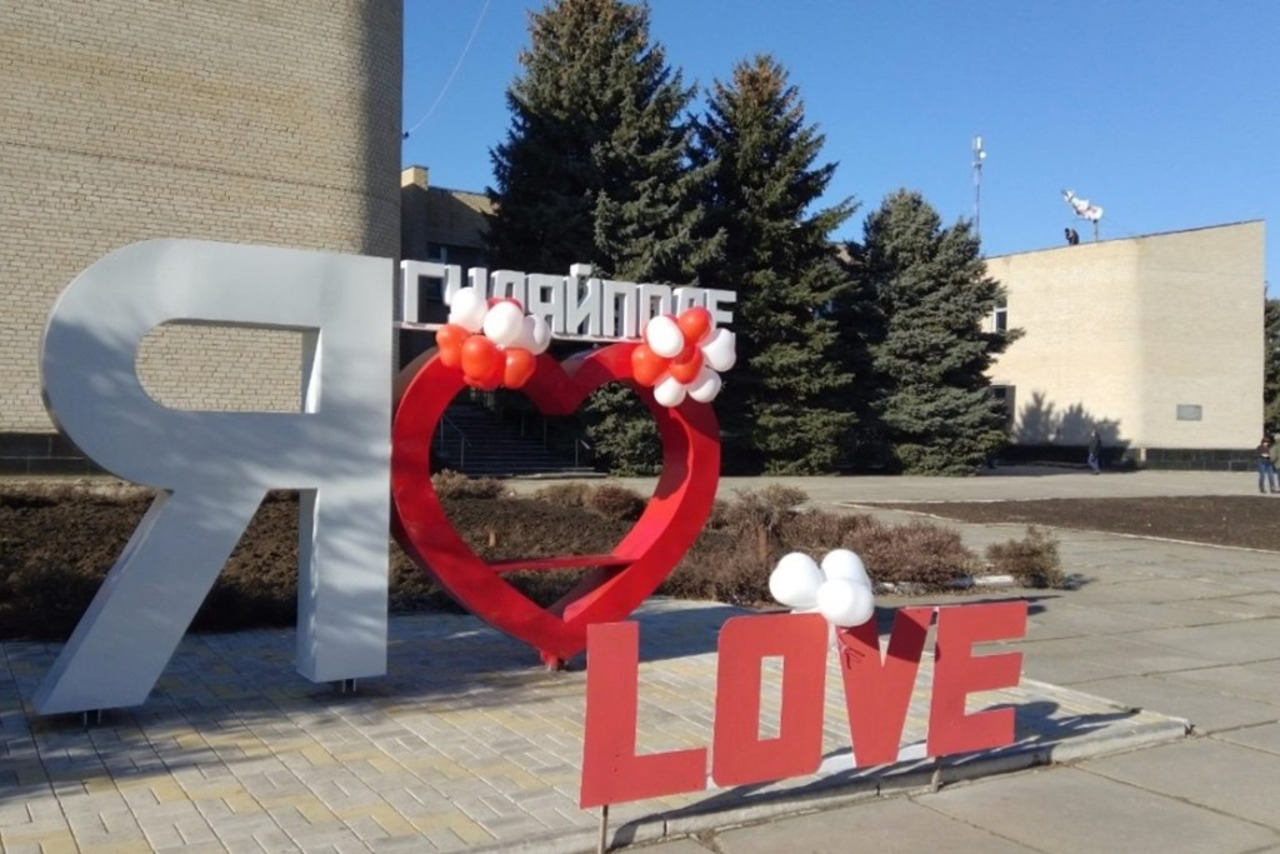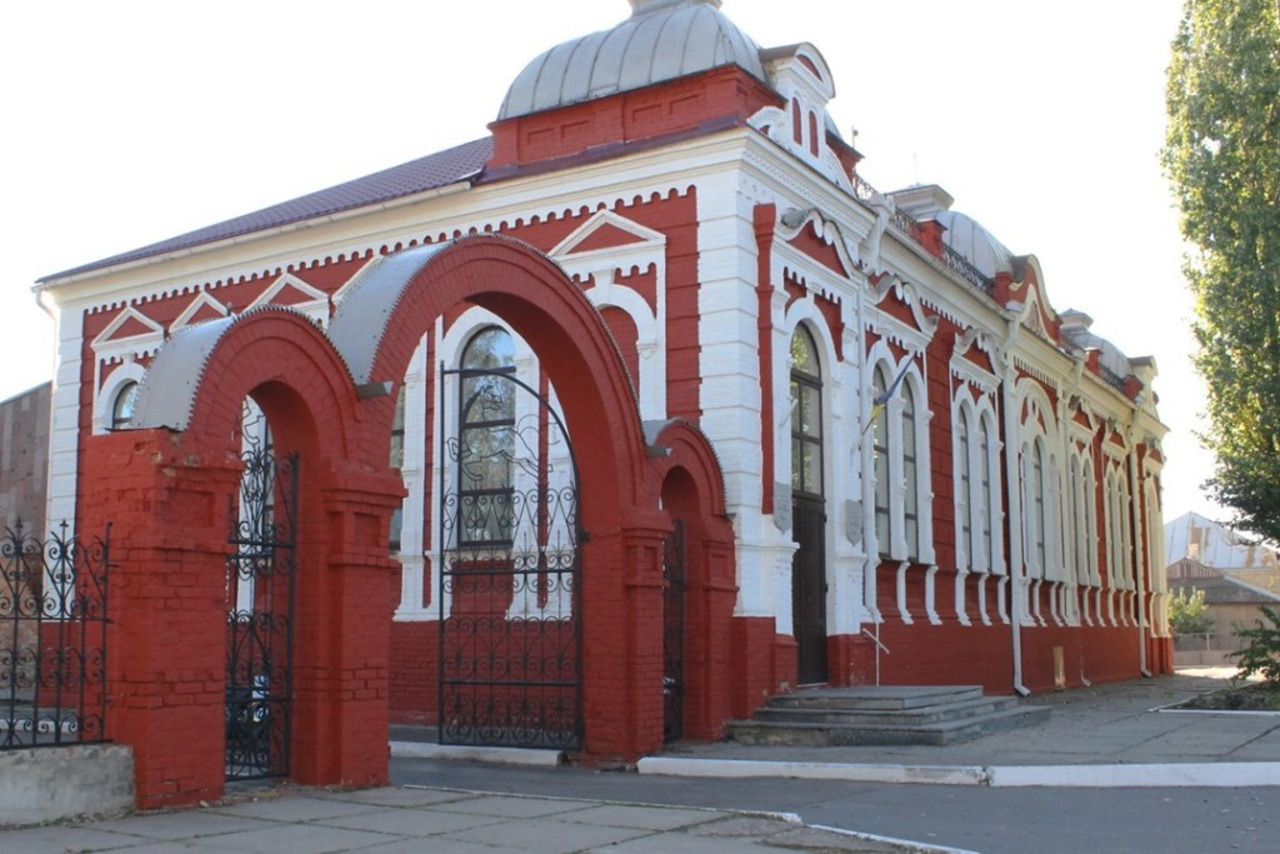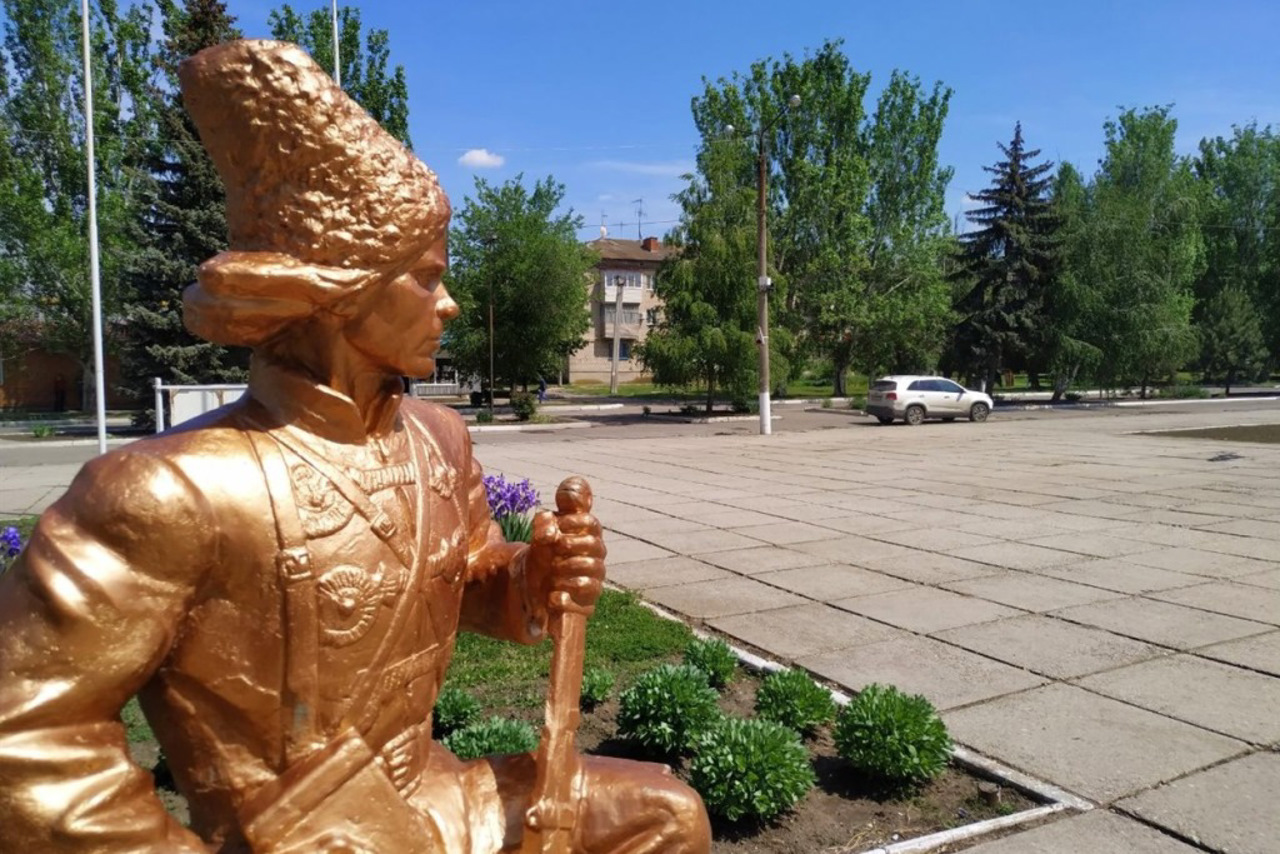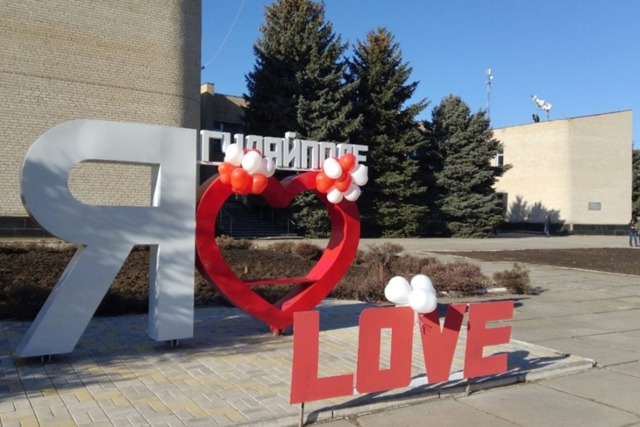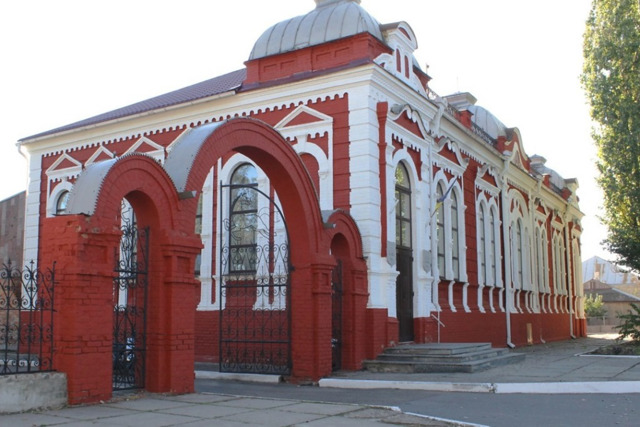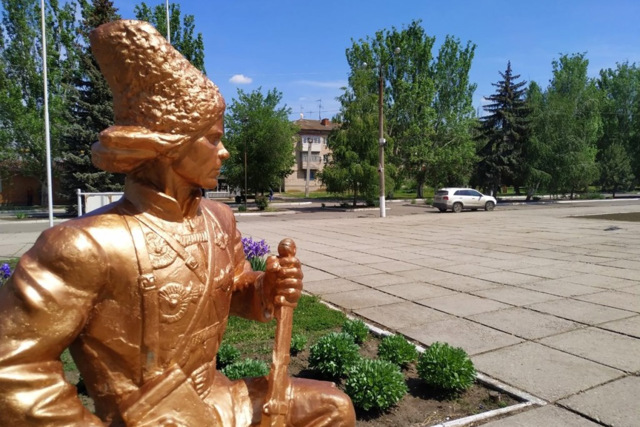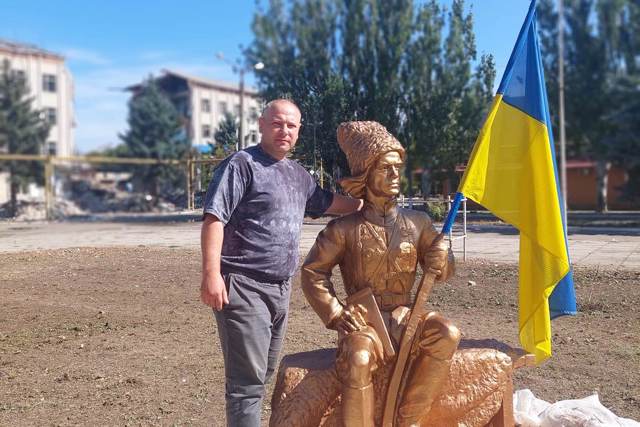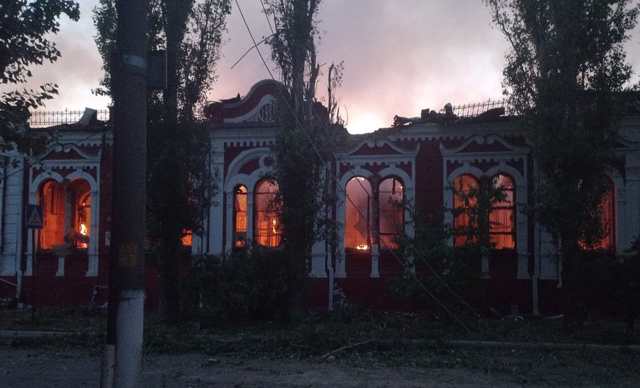Functional temporarily unavailable
Huliaipole
Travel guide online Huliaipole
General information about Huliaipole
The city of Huliaipole in the Zaporizhia region is a symbol of anarchy and steppe liberties, the former capital of the Makhnovist movement. It is located on the Haichura River 90 km east of Zaporizhia.
Huliaipole was founded in 1785 as a military settlement by decree of the provincial government of the Ekaterinoslav viceroyalty. By that time, there were already settlements of fugitive peasants and Haidamak rebels.
In 1798, Gulyaipole became the volost center of the Novomoskovsk district. The Chumaks, whose salt routes passed nearby, played a major role in the development of trade. The Huliaipole fair was the largest in the district. At the end of the 19th century, two agricultural machinery factories were opened by entrepreneurs Krieger and Kerner, and a railway station appe ...
The city of Huliaipole in the Zaporizhia region is a symbol of anarchy and steppe liberties, the former capital of the Makhnovist movement. It is located on the Haichura River 90 km east of Zaporizhia.
Huliaipole was founded in 1785 as a military settlement by decree of the provincial government of the Ekaterinoslav viceroyalty. By that time, there were already settlements of fugitive peasants and Haidamak rebels.
In 1798, Gulyaipole became the volost center of the Novomoskovsk district. The Chumaks, whose salt routes passed nearby, played a major role in the development of trade. The Huliaipole fair was the largest in the district. At the end of the 19th century, two agricultural machinery factories were opened by entrepreneurs Krieger and Kerner, and a railway station appeared nearby.
Huliaipole gained great fame during the years of the Ukrainian Revolution. In 1917-1921, the center of the Revolutionary Insurgent Army of Ukraine was located here under the leadership of the anarchist Nestor Makhno, who was born and raised in Huliaipole (a monument was erected).
In the city center, an architectural ensemble of buildings from the 19th-20th centuries has been preserved, in one of which the Nestor Makhno Museum has been opened. At the end of August, the musical and literary festival "Independence Day with Makhno" takes place.
During the large-scale invasion of the Russian army in 2022, Huliaipole found itself a frontline city for a long time. Regular shelling by the occupiers led to numerous destructions.
Місто Гуляйполе у Запорізькій області – символ анархії та степової вольниці, колишня столиця махновського руху. Розташоване на річці Гайчура за 90 км на схід від Запоріжжя.
Гуляйполе засноване 1785 року як військова слобода указом губернського правління Катеринославського намісництва. На той час тут уже були поселення селян-втікачів і повстанців-гайдамаків.
1798 року Гуляйполе стало волосним центром Новомосковського повіту. Велику роль у розвитку торгівлі зіграли чумаки, соляні шляхи яких проходили поблизу. Гуляйпільський ярмарок був найбільшим у повіті. Наприкінці XIX століття було відкрито два заводи сільськогосподарських машин підприємців Крігера та Кернера, неподалік з'явилася залізнична станція.
Велику популярність Гуляйполе здобуло у роки Української ...
Місто Гуляйполе у Запорізькій області – символ анархії та степової вольниці, колишня столиця махновського руху. Розташоване на річці Гайчура за 90 км на схід від Запоріжжя.
Гуляйполе засноване 1785 року як військова слобода указом губернського правління Катеринославського намісництва. На той час тут уже були поселення селян-втікачів і повстанців-гайдамаків.
1798 року Гуляйполе стало волосним центром Новомосковського повіту. Велику роль у розвитку торгівлі зіграли чумаки, соляні шляхи яких проходили поблизу. Гуляйпільський ярмарок був найбільшим у повіті. Наприкінці XIX століття було відкрито два заводи сільськогосподарських машин підприємців Крігера та Кернера, неподалік з'явилася залізнична станція.
Велику популярність Гуляйполе здобуло у роки Української революції. У 1917-1921 роках тут розташовувався центр Революційної повстанської армії України на чолі з анархістом Нестором Махном, який народився і виріс у Гуляйполі (встановлений пам'ятник).
У центрі міста зберігся архітектурний ансамбль будівель XIX-XX століть, в одному з яких відкрито музей Нестора Махна. Наприкінці серпня відбувається музично-літературний фестиваль "День Незалежності з Махном".
Під час широкомасштабного вторгнення російської армії у 2022 році Гуляйполе надовго опинилося прифронтовим містом. Регулярні обстріли окупантів призвели до численних руйнувань.
Сплануй своє перебування у Huliaipole
What to see and where to go in Huliaipole
Tourist attractions and museums of Huliaipole
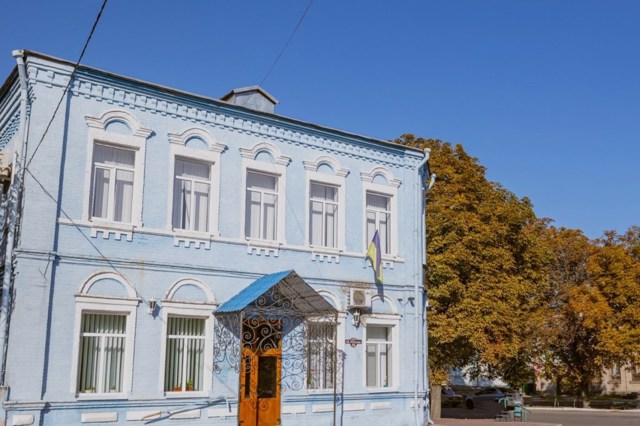
Huliaipole City Council
Architecture
The building of the Huliaipole city council was built at the beginning of the 20th century. In 1918-1921, the executive committee of the Huliaipole Council was located here, where the hero of the liberation movement of the southern Ukrainian peasantry, Nestor Makhno, worked. Congresses of front-line insurgents, workers' and peasants' councils, departments of the military field headquarters were held here.
A memorial plaque was installed.
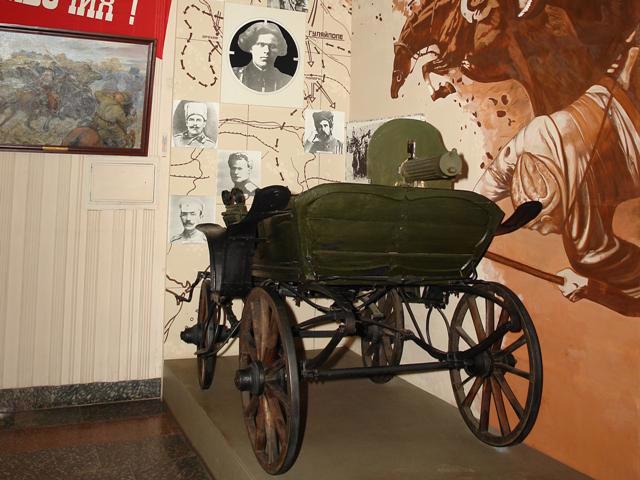
Huliaipole Local Lore Museum
Museum / gallery
The Huliaipole Museum of Local Lore is located in the historic building of the former Mutual Credit Bank in the city center.
The exposition of the museum consists of 9 sections with a fund of 17,000 exhibits, which tell about the most ancient history of these lands, the era of the Zaporozhian Cossacks, the life of peasant and burgher houses, crafts of the Huliaipole region, etc.
The most interesting part of the exposition tells about the life and activities of the glorified anarchist, leader of the Revolutionary Rebel Army, Nestor Makhno. In particular, the legendary tachanka is presented - a movable point of fire on a horse-drawn vehicle invented by the Makhnovists. A monument to Tachanka was installed in the yard.
RUSSIAN-UKRAINIAN WAR
During the large-scale Russian invasion of Ukraine in 2022, the city of Huliaipole was on the front line and under constant fire from the Russian army. At the beginning of 2023, not a single surviving building remained in the city. The local lore museum of Huliaipole also suffered significant destruction.
In August 2024, the building of the Huliaipole Museum of Local Lore burned to the ground as a result of another Russian shelling. The day before, museum employees managed to evacuate most of the exposition, which is part of the Museum Fund of Ukraine.
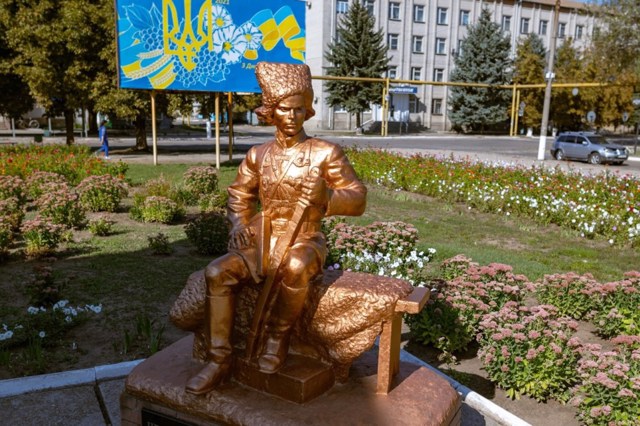
Nestor Makhno Monument
Monument
The monument to Nestor Makhno was erected in 2009 in the center of the city of Huliaipole, in the birthplace of the famous anarchist, the leader of the peasant insurgent movement in the south-east of Ukraine in 1917-1919.
The concrete sculpture is a copy of the plaster monument that was erected a year before in Huliaipole in front of Makhno's older brother's house, which has survived. The commander of the Revolutionary Rebel Army, Nestor Makhno, is depicted sitting in a military uniform and papas with a saber in his hand.
During the full-scale Russian invasion of Ukraine, Russian troops destroyed the Nestor Makhno monument, which was an unofficial symbol of the city, with a missile strike in 2024. However, in September of the same year, the sculpture was restored.
Huliaipole on photo and video
Huliaipole in news and blogs
Reviews Huliaipole
Geographical information about Huliaipole
| {{itemKey}} | {{itemValue}} |
|---|---|
| Region |
Zaporizhzhia |
